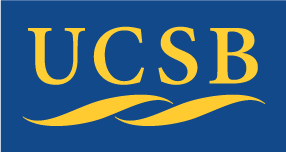|
Geometry, Topology, and Physics Seminar, Winter 2011
Organizer:
Dave Morrison.
Meets 4:00 - 5:30 p.m. Fridays in South Hall 6635.
Other Quarters: [
Fall, 2021;
Winter, 2020;
Fall, 2019;
Spring, 2018;
Winter, 2018;
Fall, 2017;
Spring, 2017;
Wnter, 2017;
Fall, 2016;
Spring, 2016;
Winter, 2016;
Fall, 2015;
Spring, 2015;
Winter, 2014;
Fall, 2013;
Fall, 2012;
Fall, 2011;
Winter, 2011;
Spring, 2010;
Winter, 2010;
Fall, 2009;
Spring, 2009;
Winter, 2009;
Fall, 2008;
Spring, 2008;
Winter, 2008;
Fall, 2007;
Spring, 2007;
Winter, 2007;
Fall, 2006
]
| Jan. 14 |
Dave Morrison (UCSB)
Abstract:
Type IIB string theory has an SL(2,Z) symmetry and a complex scalar field tau valued in the upper half plane, on which SL(2,Z) acts by fractional linear transformations; this naturally suggests building models in which tau is allowed to vary. Although the SL(2,Z)-invariant function j(tau) can reveal some of the structures of these models, for their full construction and study we need SL(2,Z) modular forms, particularly the Eisenstein series E_4(tau) and E_6(tau) and the corresponding Weierstrass equations. The Weierstrass equations can also be analyzed in algebraic geometry via the theory of elliptic curves. This approach leads to the "F-theory" compactifications of type IIB theory.
Similarly, the heterotic string compactified on T^2 has a large discrete symmetry group SO(2,18;Z), which acts on the scalars in the theory in a natural way; there have been a number of attempts to construct models in which these scalars are allowed to vary by using SO(2,18;Z)-invariant functions. In our new work, we give (in principle) a more complete construction of these models, using SO(2,18;Z)-modular forms analogous to the Eisenstein series. In practice, we restrict to special cases in which either there are no Wilson lines -- and SO(2,2;Z) symmetry -- or there is a single Wilson line -- and SO(2,3;Z) symmetry. In those cases, the modular forms can be analyzed in detail and there turns out to be a precise theory of K3 surfaces with prescribed singularities which corresponds to the structure of the modular forms. Using these two approaches -- modular forms on the one hand, and the algebraic geometry of the K3 surfaces on the other hand -- we can construct non-geometric compactifications of the heterotic theory.
This is a report on two joint projects: one with McOrist and Sethi and the other with Malmendier.
Audio [ mp3,
wma ];
Lecture
notes.
|
| Jan. 21 |
The seminar will meet at 2 pm in the KITP Auditorium
(joint meeting with the High Energy & Gravity Seminars).
Nathan Seiberg (IAS)
|
| Jan. 28 |
Dave Morrison (UCSB)
Abstract:
A large class of examples of Calabi-Yau varieties is provided by "complete
intersections" in toric Fano varieties: that is, Calabi-Yau varieties
whose homogeneous ideal has the same number of generators as the
codimension of the variety.
This class has been well-studied both in mathematics
and in physics, in part because of Witten's "gauged linear sigma model"
(GLSM)
construction which provides a two-dimensional superconformal field theory
corresponding to the Calabi-Yau variety. The GLSM corresponding to
a complete intersection always has an abelian gauge group.
From the viewpoint of projective geometry, it is well-understood that
"most" varieties are not complete intersections. A classical result
of Serre shows that a codimension two variety can be expected to be
a complete intersection, but in codimension three, Buchsbaum and Eisenbud
showed around 1970 that a different construction is needed: the variety
can be expected to be a "Pfaffian variety," determined by a rank
condition on a skew-symmetric matrix of homogeneous polynomials.
In 1998, Rødland studied Calabi-Yau threefolds built from
a $7\times 7$ skew-symmetric matrix, and in 2006, Hori and Tong showed
how to describe these Calabi-Yau threefolds with a GLSM using a
non-abelian gauge group.
There have been other constructions of Pfaffian Calabi-Yau threefolds
in recent years, notably by Tonoli and Kanazawa. This report on work
in progress will describe how to extend the Hori-Tong construction
to give GLSM descriptions of these Calabi-Yau threefolds. In principle,
the construction should work for any Calabi-Yau variety of codimension
three in a toric Fano ambient space.
Audio [ mp3,
wma ];
Lecture
notes v1,
Lecture
notes v2.
|
| Feb. 4 |
Dave Morrison (UCSB)
Abstract:
We will continue the discussion of Pfaffian Calabi-Yau varieties
and gauged linear sigma models.
Audio [ mp3,
wma ];
|
| Feb. 11 |
No meeting
|
| Feb. 18 |
No meeting
|
| Feb. 25 |
The seminar will meet at 3 pm in South Hall 6617
(joint meeting with the Differential Geometry Seminar).
James Isenberg (University of Oregon)
Ricci Flow on NonCompact Surfaces (Plus Comments on Kaluza-Klein Ricci Flow on Surfaces)
|
| March 4 |
The seminar will meet at 3 pm in South Hall 6617
(joint meeting with the Differential Geometry Seminar).
Dan Knopf, (University of Texas , Austin)
Ricci flow through singularities
Abstract: We construct and describe smooth forward Ricci flow evolutions of singular initial metrics resulting from rotationally symmetric neckpinches, without performing an intervening surgery. In the restrictive context of rotational symmetry, our construction gives evidence in favor of Perelman's hope for a "canonically defined Ricci flow through singularities." This is joint work with Sigurd Angenent and Cristina Caputo.
|
|
|



